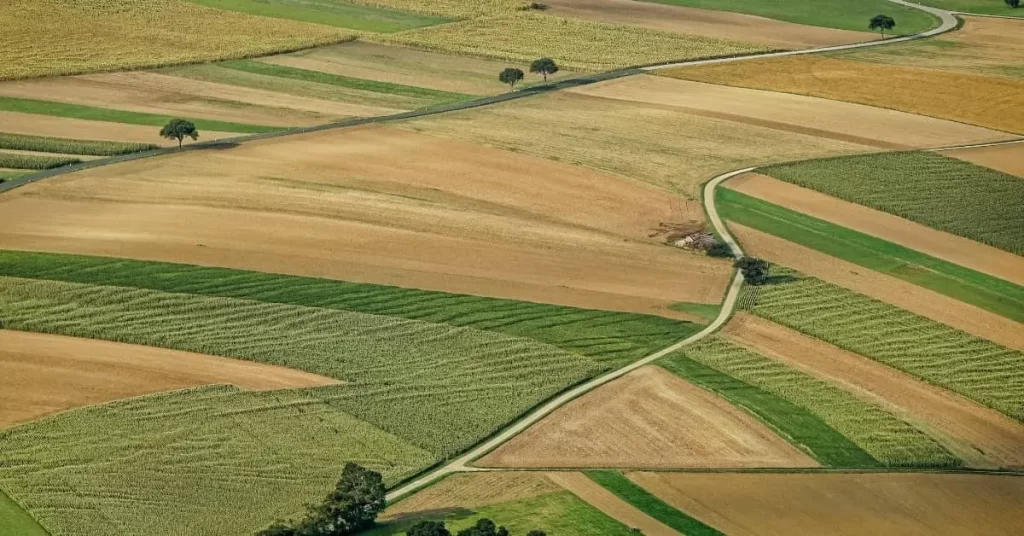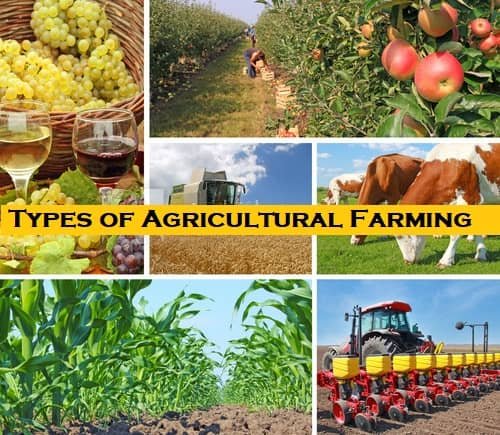Farmers have been using various methods to farm for centuries. This article will explore types of agricultural farming with definitions, advantages, and disadvantages.
Agricultural farming is an ancient practice that involves cultivating the land to produce food. Today, it is a vital part of the global food system, providing sustenance for billions of people. Agricultural farming is also a major contributor to climate change, accounting for more than one-third of all greenhouse gas emissions. To address this, we need to make our farms more sustainable by using less energy and producing fewer emissions.
Definition of Agricultural farming
Agricultural farming is the process of growing crops and raising livestock for food, fiber, or fuel. It is one of the oldest forms of human activity, and it remains an important part of the world’s economy today. Agricultural farming can be divided into two main categories: crop farming and livestock farming. Crop farming involves planting seeds in the ground and harvesting the resulting plants. Livestock farming involves raising animals for meat, milk, eggs, or other products.

In the United States, farming is a huge industry. Agricultural farming is the process of producing crops and livestock for human consumption. Farmers use many different methods to produce their crops and livestock. Some farmers use traditional methods, while others use more modern methods. Agricultural farming is an important part of the United States economy.
- Agriculture is a vital part of the world’s economy.
- Agriculture is the process of growing crops and raising livestock.
- Agriculture plays a vital role in the development of countries around the world.
- Agriculture is a source of food and income for millions of people.
- Agriculture is an important part of our history and our future.
Types of agricultural farming
Different types of agricultural farming definitions, advantages, and disadvantages are given below-
1. Pastoral farming:
Farming without cultivation of land is known as pastoral farming. In pastoral farming, the land is usually used under natural grass, and the primary purpose is to raise cattle, horses, or sheep. This type of farming has great importance for getting wool, hides, meat, milk, butter, and cheese.
Advantages of pastoral farming:
- No cost of fodder crop production;
- A large number of fallow land easily become productive.
Disadvantages of pastoral farming:
- Lower production of fodder crops due to zero pillaging.
- This farming is not possible due to the lack of land area.
2. Arable farming
The farming in which cultivation is involved is called arable farming. Arable farming may be devoted to-
- Crop raising only a single crop or variety of crops being grown,
- a kind of mixed farming in which may combine livestock for the production of milk and milk products.
3. Pure arable/specialized farming:
When a farm business unit derives more than 50 percent of its income from a single enterprise, it is called a specialized farm; this means that among the possible crops or livestock enterprises taken up by a farmer, one particular crop or livestock enterprise contributes more than 50 percent of the income. The reasons for specialized farming are;
- Assured income from the enterprise;
- Its suitability to the area;
- Its relative profitability etc.
Advantages of pure arable farming:
- Better Utilization of Land: You can put land to most productive use by optioning the enterprise that is best suited. A given type of land no doubt allows options for alternative crops; still, there is a possibility of a particular crop capable of rewarding the farmer with a better income.
- Better Management: Specialization is bestowing attention on a particular enterprise. It reduces the pressure on the farmer to care for several enterprises. Naturally, it reduces the wastage of resources.
- Less Requirement of Equipment: The farmer can carry on the business activity with the_ equipment required for the chosen enterprise. There are no urgent requirements to equip the farm with a variety of equipment.
- Increase in Skill of the Farmer: The farmer’s efficiency increases as he concentrates on one enterprise. His experience in the enterprise sharpens his skills in running the enterprise.
- Better Marketing: On marketing front the front, the farmer is better. He is saved from the pressure of finding a market if he were to sell diversified products. It allows for better marketing functions, i.e., assembling, transport, grading, financing, etc.
Disadvantages of pure arable farming:
- Failure of Crop: The farmer runs the risk of losing heavily in crop omit failure. There is a possibility of compensation; this is the biggest drawback of specialized farming.
- Non-utilization of Productive Resources: Since the farmer confines one or few enterprises, the various farm resources like land water, labor, capital, etc., may not be fully utilized. Because of the limited enterprises, some of the resources may remain untapped or under-utilized.
- Affect on Soil Health: Continuous raising of one crop or few crops may be exerting more significant pressure on soil health. This practice does not allow crop rotation, thereby affecting soil health.
4. Diversified Farming
It is also known as general farming. Here farming is diversified, i.e., several enterprises are taken up on the farm simultaneously. It also means the production and sale of theme product art at a different time during the year. There is not much significance for a single enterprise under this situation. No single enterprise contributes as high as 50 percent of the total income derived in farming.
Advantages of diversified farming:
- Better Utilization of Farm Resources: Because of the diversified cropping and crop rotations, land, labor, and farm machinery and equipment are better utilized than specialized farming.
- Reduction of Farm Risk: As a variety of crops are found, failure of one or two crops will not much affect the income from farming. Farmer can withstand the loss incurred from one or two enterprises.
- The flow of Income: The farmer enjoys the advantage of deriving regular income as different crops are grown.
Disadvantages of diversified farming:
- Ineffective Supervision: Several enterprises on the farm will stand in the farmer’s way in bestowing effective supervision. Effectiveness can be found when there is a limit to the number of enterprises. The diversified enterprises allow the scope for the leakages in the farm business to go unnoticed; this is likely to affect the farm economy.
- Less Possibility for Maintaining a Variety of and Machineries: It becomes expensive to purchase and maintain suitable implements and machinery for the various enterprises taken up on the farm.
- Probable Marketing Insufficiencies: The growing of various crops is likely to bring problems on the marketing front. The farmers have to search for the market.
5. Mixed Farming
It represents a type of farming in which crop production and livestock production are combined to sustain and satisfy as many farmers’ needs as possible. There are limits specified regarding livestock production, poultry, fisheries, beekeeping, etc., to the gross income on the farm. These enterprises are supposed to contribute at least 10 percent of gross income. However, this contribution should not exceed 49 percent.
Advantages of mixed farming:
- Mixed farming facilitates the application of organic manuring to the soil, thus helping maintain soil health.
- It employs the farmer and his family throughout the year.
- Agricultural byproducts are correctly used in mixed farming.
- It provides a sort of stability to the farm business.
Disadvantages of mixed farming:
- It involves higher initial and current costs.
- It isn’t easy to start up as it is complex.
- It receives different types of implementation and labor.
- Better specialized equipment and machinery on the farm will not be considered.
6. Single farming:
A single crop or a variety of crops is grown.
Advantages of single farming:
- Possible to earn a large amount of foreign exchange by capturing a monopoly marketing system.
- Efficiency and skills are increased of .farm laborers involved in crop production, processing, and marketing.
- It is easy to farm mechanization.
- May establish the agro-based industry.
- The quality of crops may be increased.
Disadvantages of single farming:
- Risk should be taken due to loss of crops by damage.
- Crop rotation may not be possible.
- Insect pests and diseases appear epidemically.
7. Multiple farming:
Different crops or different varieties of crops are grown in different plots is called multiple farming.
Advantages of multiple farming:
- Crop rotation is possible.
- Farm labor can be engaged throughout the year.
- Different crops may be grown.
- The risk of loss for the failure of crops is low.
Disadvantages of multiple farming:
- Complete farm mechanization is not possible.
- Soil and climate may not be favorable for different crops.
Practical farming books for better understanding
Agriculture is the backbone of any society, and for farmers, having access to practical and informative resources is crucial. There are countless agricultural books available, but which ones are worth reading? Here are some of the best-selling books that help you understand in practical agricultural farming are given below.
Conclusion
Agricultural farming is the process of planting, tending to, and harvesting crops for food or feed. Farmers use a variety of techniques to care for their crops, including irrigation, pesticides, and herbicides. Agricultural farming is an ancient practice that continues to play a significant role in the world’s food supply.
In conclusion, agricultural farming comes in many different forms with various advantages and disadvantages. No one type of agricultural farming is perfect, and each has its own unique set of pros and cons. It is important to carefully consider all the aspects of each type of agriculture before making a decision about which is right for your farm.
